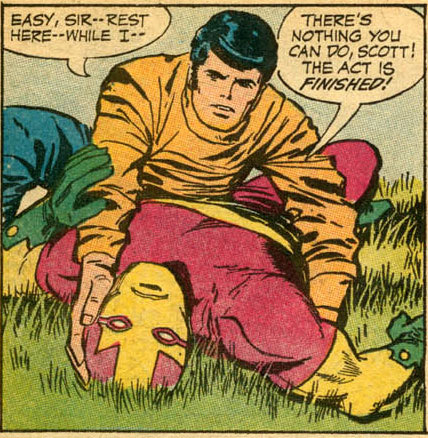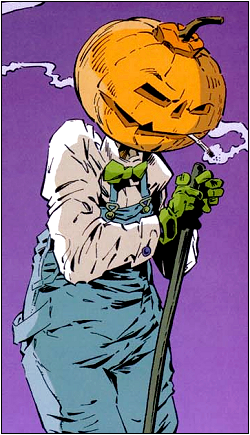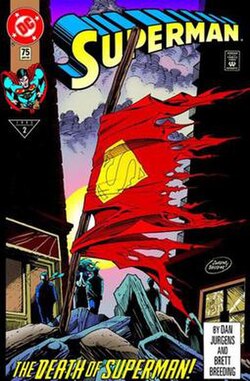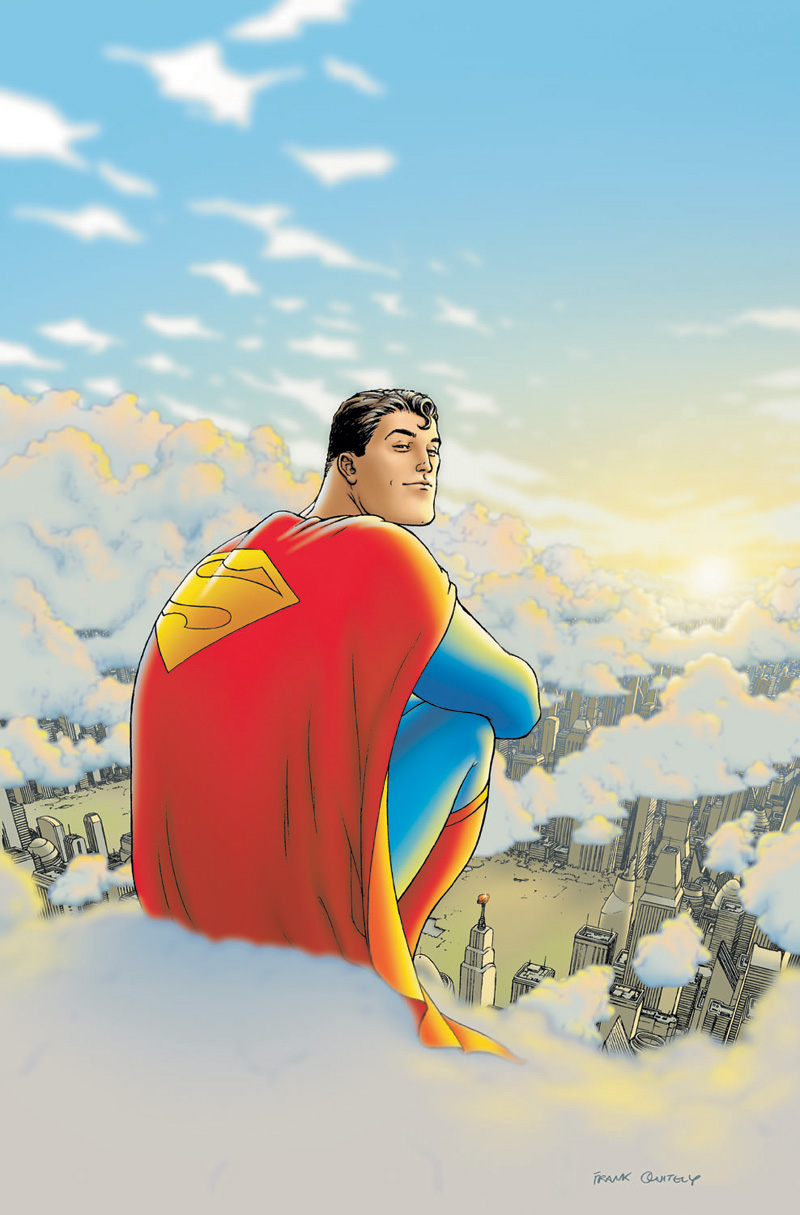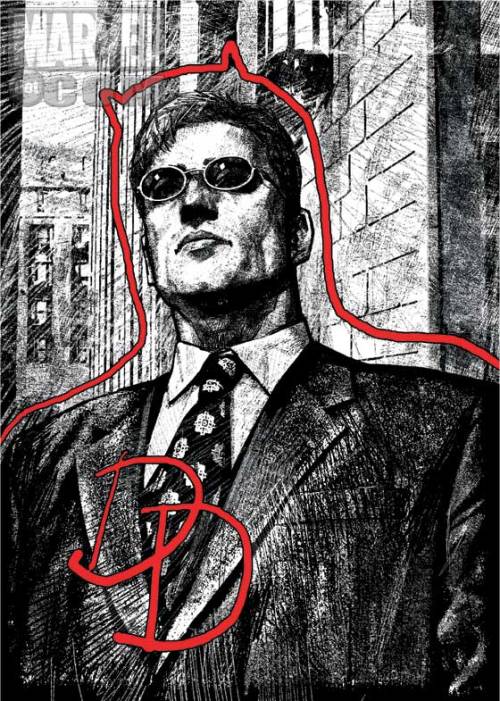The image above was (and still is!) the impetus for whatever daydreams i have about creating an original comic book. These three panels by my friend Dan Maness harken back over a decade, to when i shared an apartment with him and another friend. Back then, we spent the majority of our time testing the durability of Sega Dreamcast controllers exposed to extreme levels of furious white-knuckled gaming, spontaneous hiking and biking trips, and obsessing over kung-fu flicks in an attempt to incorporate the moves and philosophy into daily life. Our residency in what we all considered the best pad we'd ever had culminated in a one-way trip across the pond, just after the 9/11 event that so rocked the world and still resonates today.
Prior to striking up a friendship, Dan was known as "Cool Guy #2" at the cafe where i worked and spent inordinate amounts of free time. No one knew his name, but he was in there pretty much daily, working in his sketchbooks. Anyone could plainly see his talent, and he definitely looked the part of a brooding artist with his headphones providing the kind of isolation needed for the intense focus he poured into those sketchbooks.
Whoever "Cool Guy #1" is, i certainly don't remember. But Cool Guy #2 became Dan after i saw him at the local comic shop one Wednesday afternoon. Now, when Comic Heaven opened in the 90s, i was one of the very first people in the door. i learned about the shop a few months earlier, when i overheard the owner talking about it while i was mopping the floor in the McDonald's across the street from where the shop would be. The owner was there, and i remember asking him if i could work there part time and get paid in Magic: The Gathering cards (he said no).
Anyway, in comes Cool Guy #2 like Norm from Cheers - everyone working there turns and greets him with hearty hello's. He's got a pull list and they even special ordered a Buddy Christ statuette that arrived for him that day.
Who was this guy?
 i'd been a loyal customer of the shop for years at this point and i'd never seen this dude before. And here he comes strolling in with his comics set aside and special order merch. Meanwhile i'm still waiting for the Red Rocket 7 #5 they said they'd get for me! (Kirt - if you're reading this - i eventually got it).
i'd been a loyal customer of the shop for years at this point and i'd never seen this dude before. And here he comes strolling in with his comics set aside and special order merch. Meanwhile i'm still waiting for the Red Rocket 7 #5 they said they'd get for me! (Kirt - if you're reading this - i eventually got it).
So after tricking Cool Guy #2 into inviting me to a WWF WrestleMania 2000 get-together that evening, we became fast friends. We were both into comics obviously, and pro-wrestling, video games, and a desire to create something of our own.
He likes to draw. i like to write. Ipso facto we thought it would be cool to make our own comic.
Flash-forward a couple of months. We've got our dope high-rise apartment, festooned with longboxes and centralized around the shrine of chop-socky films and gaming consoles. One of countless controller-creaking epic battles takes place between Cable, Captain America, and Iron Man vs. Venom, Blackheart, and Shuma-Gorath courtesy of Marvel Vs. Capcom 2.
There is a pause in the action.
"Check this out," comes the call from behind us.
Three panels. Four words.
We had our comic.
The Last Hit Man, as originally conceived, was distilled down to a simple concept. 'The Bogeyman of Stoners' was a mysterious individual who appeared unannounced at the abodes of pot-smokers whenever their supply of herb ran low. Such hapless victims, upon retrieving their sack for a final toke, would find our man in the shadows. His craggy face illuminated only by the glow of embers in the pipe, he vanished along with the puff of smoke from the remains of your stash.
He was a villain! Or an anti-hero at best.
Okay, so it wasn't much to go on. But we tried to develop the idea anyway and i think we came up with some pretty cool stuff.
Since neither of us liked superhero costumes all that much, we decided our guy definitely would not wear anything of the sort. At best, his 'working clothes' consisted of a leather motocross jacket, but that was pretty much it. He was just a regular dude, insofar as he did not shoot lasers from his eyes, fly, possess superhuman strength, or anything like that.
 The influence of kung-fu films played heavily into our guy's persona, and he evolved into a kinda Remo Williams-style figure. We gave him a home in fictional Souja City, where he lived in a lighthouse. The city was traditionally watched over by a single person called the Hit Man, and our guy was the last of the bunch. Hit Man received aid from a Chinese martial arts master named the Chess King, and even though we figured ol' C.K. taught our guy some moves, most of the time he preferred to fight with his fists, or firearms. But more often than not, we imagined what his life was life when he wasn't saving the city. This usually entailed stealing that last hit from area stoners and hanging out at the coffee shop with his friend Jack.
The influence of kung-fu films played heavily into our guy's persona, and he evolved into a kinda Remo Williams-style figure. We gave him a home in fictional Souja City, where he lived in a lighthouse. The city was traditionally watched over by a single person called the Hit Man, and our guy was the last of the bunch. Hit Man received aid from a Chinese martial arts master named the Chess King, and even though we figured ol' C.K. taught our guy some moves, most of the time he preferred to fight with his fists, or firearms. But more often than not, we imagined what his life was life when he wasn't saving the city. This usually entailed stealing that last hit from area stoners and hanging out at the coffee shop with his friend Jack.
Yep, Hit Man has a pretty nice supporting cast. In fact, i'd say we had more fun coming up with oddball characters for him to interact with than crafting any specific tales. Now that i think about it, we probably just kept coming up with new characters and figured all the stories would just be their introductions into the universe and how they related to the main character.
 Jack was supposed to be our 'everyman' character, the guy who doesn't have any special abilities, and basically just wants to live in a safety, work his job as a mechanic, and party with his two roommates Jono and Grant. The latter is a catlike fella (ears included) with a penchant for naps and nocturnal hi-jinks, while the former turns out to be an extra-dimensional dragon in human form (he doesn't know it though).
Jack was supposed to be our 'everyman' character, the guy who doesn't have any special abilities, and basically just wants to live in a safety, work his job as a mechanic, and party with his two roommates Jono and Grant. The latter is a catlike fella (ears included) with a penchant for naps and nocturnal hi-jinks, while the former turns out to be an extra-dimensional dragon in human form (he doesn't know it though). Eventually, the trio's involvement with the Hit Man would lead them on an interstellar adventure where they would helm a massive vehicle called the Christmas Goose that was as big as a mountain and powered by Chess King's robot daughter. Before we could get to any of that stuff though, we were going to need an antagonist. Someone to match the Hit Man, test his mettle, and constantly plot and scheme to increase his power and control in Souja City.
Eventually, the trio's involvement with the Hit Man would lead them on an interstellar adventure where they would helm a massive vehicle called the Christmas Goose that was as big as a mountain and powered by Chess King's robot daughter. Before we could get to any of that stuff though, we were going to need an antagonist. Someone to match the Hit Man, test his mettle, and constantly plot and scheme to increase his power and control in Souja City.
Inspired by one of the all-time great villains in the best damn kung-fu movie ever, enter Nemesis Tao.
Ruthless, heartless, master of kung-fu and leader of a huge criminal empire in Souja City, Nemesis Tao was the perfect foil to the Hit Man. He had plenty of goons for our guy to fight, and was himself more than ready and willing to throw down with anyone at any time. Tao's motivation was perfecting his kung-fu, and everything else played second fiddle to his ambition to be the ultimate martial artist. All the money, power, and influence he gained through his criminal enterprise was meaningless in the pursuit of perfection, and he would sacrifice even his own children without hesitation if it furthered his goals.
So we had our hero, a setting, supporting cast, and enemies. What do we do next?
The answer to that came serendipitously enough through our friend Bob Ramsak, who has since moved to Slovenia and enjoys life as a world traveler and photographer. But back in 2002, Bob lived here in Ohio and had just gotten a position as editor for a now-defunct publication called Tonight Magazine.
At that time, i had only recently decided not to continue with my college education at Kent State University where i pursued a degree in magazine journalism. Here i am 10 years later, back in school to finally get that piece of paper while fumbling through this blog to hone my writing and interviewing skills. So when Bob asked if i wanted to do any writing for the mag, i jumped at the chance. My first published piece was an interview i did with John Greiner, a Cleveland-based artist known for his comics and flyers. Incidentally, his is another name on The List and i hope to do a follow-up in the near future for The Long Shot.
In addition to that piece, Bob granted a quarter page of every issue to Dan and i for our comic. Titled quite naturally "The Last Hit Man," we produced three installments of it before Tonight ceased publication. i wish i still had those comics - they were really incredible examples of the kind of work Dan can do. Maybe he still has them somewhere. i'll have to check on that.
After that experience, my creative partnership with Dan evolved into an interest in film. Initially, we thought our Last Hit Man would make a cool movie, so we taught ourselves how to write a screenplay and started working on that. But after a couple of pages that saw the Hit Man shooting up a room full of bad guys before taking on an assault helicopter, we felt like it was just turning into a cookie-cutter action story.
 While randomly flipping through a catalog of camping supplies one afternoon, Dan and i became entranced by an ad for a weather balloon. While i was unable to locate the particular ad, the picture was very similar to this, and we started talking about a guy who used weather balloons to make a rudimentary flight pack. That story eventually became a screenplay for The Aerialist (another idea in the back catalog of my mind that i feel still has potential). But that's a whole other story. We're talking comics here! i only mention it because Dan and i put our comic book dreams on the back burner for a few years while we penned numerous spec scripts and tried our hand at film-making.
While randomly flipping through a catalog of camping supplies one afternoon, Dan and i became entranced by an ad for a weather balloon. While i was unable to locate the particular ad, the picture was very similar to this, and we started talking about a guy who used weather balloons to make a rudimentary flight pack. That story eventually became a screenplay for The Aerialist (another idea in the back catalog of my mind that i feel still has potential). But that's a whole other story. We're talking comics here! i only mention it because Dan and i put our comic book dreams on the back burner for a few years while we penned numerous spec scripts and tried our hand at film-making.
Neither of us really thought much about comics or talked about creating them for several years. We got discouraged by our movie experiences, and our focus drifted to "real-life" stuff as we both got older, changed, and lost some creative spirit.
Like any great hero, the Hit Man refused to stay down. So when i moved to Cleveland's west side and looked from my balcony to the cluster of buildings that is our downtown, my first thoughts were of comic book characters. When i gazed at the metro center, i thought that it looks so quiet and safe from just a few miles away. But i knew that was just a ruse, that there was crime in the streets and alleyways. And i felt like how i thought a comic book character might, one who possessed a measure of power above his fellow man - like they could do something about it.
That feeling instantly brought me back to daydreams about creating comics. If i was ever going to do it, it needed two things. The Last Hit Man, and Dan's artistry.
Before the feeling could pass, i called Dan posthaste with the idea.
"Remember that comic book idea we had 10 years ago? Let's work on that again."
He was into it. Dan and i are a lot alike that way - no matter what else life has in store for us, we both have a desire to create...something. Granted, neither of us is the most productive or intensely focused individuals by a damn sight. Nevertheless, the yearning is still there and i'm positive that someday we'll create something really awesome together.
This image is from 2011's new-and-improved Last Hit Man, drawn by Dan on a Wacom Cintiq tablet. When we were getting started, this was tentatively page 1 of whatever our comic would become. As you can see, it's still got familiar elements that i mentioned earlier, like Hit Man's leather jacket and the lighthouse where he lives. Artie Pons (what the former Jack evolved into) is here with him in this shot.
On our second stab at comics, we decided to do a lot more planning and plotting the course of our guy's adventures ahead of time. The first time around, we were going off pure instinct and as a result the threads got frayed along the way. Older and wiser now, we spent a good deal of time making bios for the various characters and deciding on thematic elements.




 The Hit Man circa 2011 was more of a science vs. nature story. Our guy was still the protector of Souja City, but these days he had a synthetic skin that absorbed chemical compounds to give him various extraordinary abilities. He never knew what powers he would get, so he often had to improvise on the fly. We realized a lot of the characters we came up with had substance-related backgrounds so we played with that extensively. The Hit Man himself was a bit of an addict, using chemicals to enhance his performance and never quite sure if the need was his own, or his synthetic skin. Another of his antagonists was a powerful athlete and mogul with a drug-related secret. There are a lot of examples like this, and it felt only natural to explore those themes. Along with Hit Man's new sci-fi elements came his refined origins. You can see a taste of this in one of Dan's page layouts.
The Hit Man circa 2011 was more of a science vs. nature story. Our guy was still the protector of Souja City, but these days he had a synthetic skin that absorbed chemical compounds to give him various extraordinary abilities. He never knew what powers he would get, so he often had to improvise on the fly. We realized a lot of the characters we came up with had substance-related backgrounds so we played with that extensively. The Hit Man himself was a bit of an addict, using chemicals to enhance his performance and never quite sure if the need was his own, or his synthetic skin. Another of his antagonists was a powerful athlete and mogul with a drug-related secret. There are a lot of examples like this, and it felt only natural to explore those themes. Along with Hit Man's new sci-fi elements came his refined origins. You can see a taste of this in one of Dan's page layouts.
Unfortunately, this round of Hit Man's story kind of fell by the wayside too. Both Dan and i struggled to find the time to make it happen, and we both had a healthy amount of self-doubt. i can't speak for him, but for me, i was always second-guessing the writing. Was it good? Did it make sense? Was i doing it right? Thinking about it now and seeing those words on the screen in front of me though, looks like a cop-out.
There's no "right way" to make comics.
And that's pretty much it. Not exactly the exciting tale of comic book creation you might have expected. But like Bad Service i am still proud that i created something, even if it is far from my expectation. And i'm happy to share it with you at The Long Shot where, as i pointed out in my very first post, i hope to show myself as a whole person and how i fit into my surroundings. If i have learned anything at all through the myriad attempts to create something lasting, even when it doesn't turn out how you imagined it would be, it's always worth it to try.
Try something different, then come back to something you tried before and make it better.
And if it doesn't work out, try again.
And again.
That's what i've done, and will continue to do. As a matter of fact, i think i'll get a hold of Dan and see if we can come up with something new. The third time's the charm, after all.
Thanks for visiting!










